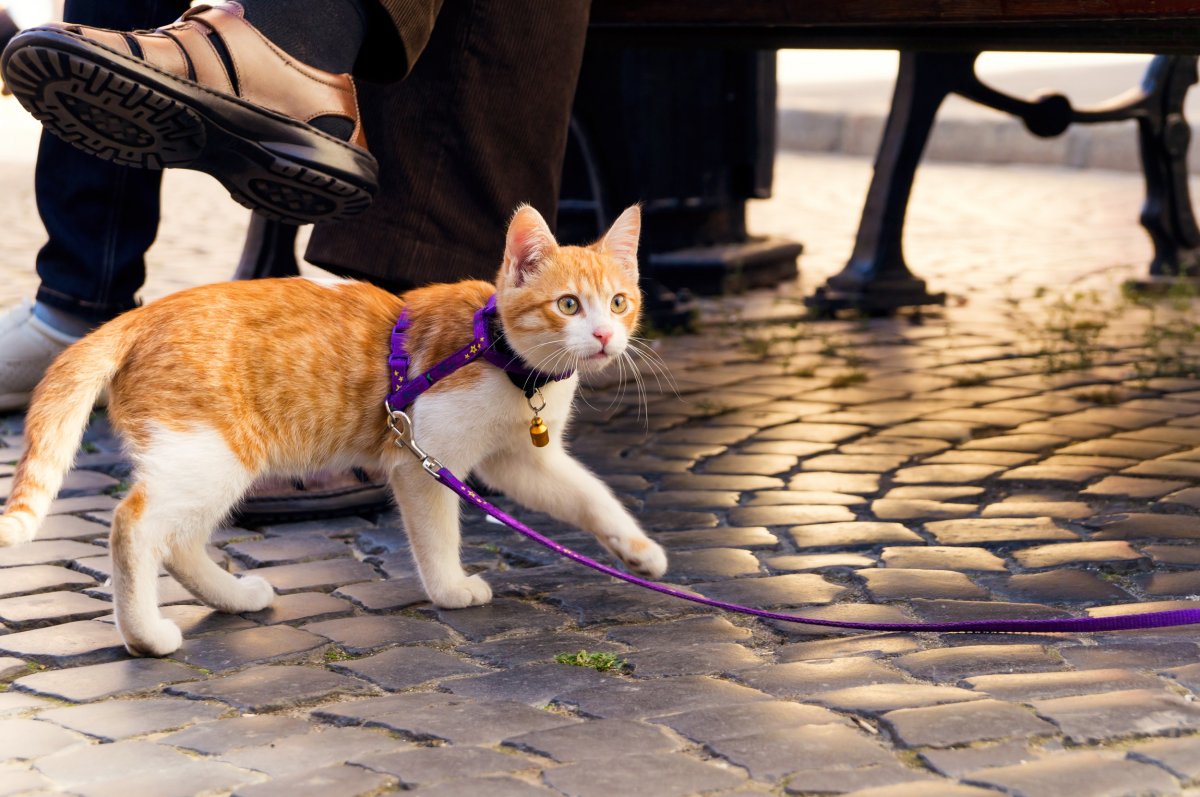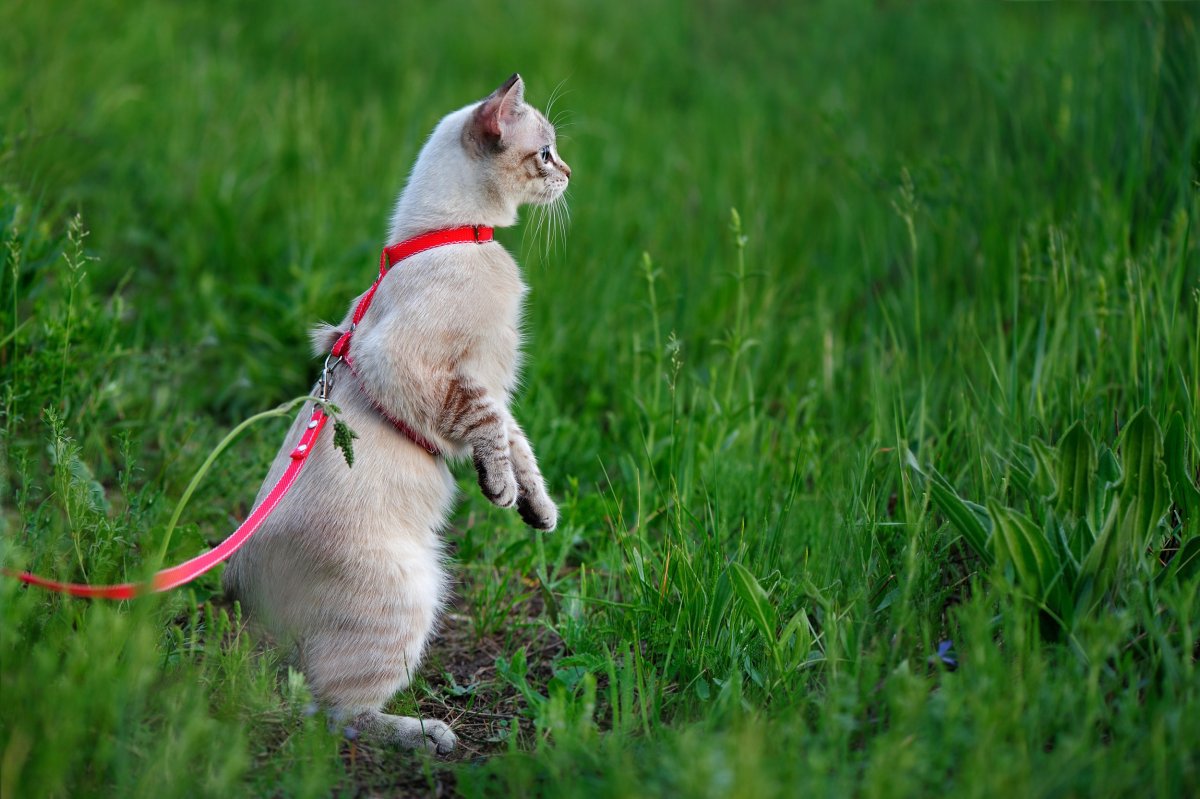Regular exercise can do wonders for your cat's health and happiness. If you're worried your pet doesn't get out and about enough—and it doesn't object—you can try putting it on a leash and taking it for a walk, just like you'd do with a dog.
Some cats won't go for this and you must not force them. If you think your cat might be willing, you need to ensure it is comfortable in a harness before you embark on this adventure.
Below are some experts' advice on how to find the best harness for your feline friend, plus tips on how to train your cat to use it.
How the Harness Should Fit on Your Cat
Dr. Christian Broadhurst, senior veterinarian at non-profit clinic Clay Humane in Orange Park, Florida, told Newsweek that a cat harness should fit snugly enough that your pet can't easily abscond.
He explained that cats have a considerable amount of loose skin in their body. If they put their mind to it, they can wriggle out of almost anything, so the snugger the harness, the lower the chance of an escape.

"We don't want to put it so tight that it cuts into the tissue—that's obviously not good. It just needs to be tight enough that they can't escape if they try."
Broadhurst recommends a harness, rather than simply a leash attached to the cat's collar. "Over time, cats climbing trees with collars have gotten caught on branches and hung themselves because the collar wouldn't break away." To prevent this, any collar you put on your cat should be a breakaway product, which usually has a weak link or an elastic band that will snap if pulled too hard.
Which Type of Harness Is Best for Your Cat?
There are three types of harness and your choice will depend on whether your cat feels comfortable with more or less fabric against its fur, according to cat behavior expert Pam Johnson-Bennett.
The minimalist option is an H-shape harness. Your cat may like the fact that this gives it freedom to move, but you need to be particularly careful as the animal might find it easier to slip out of.
Walking jackets, on the other hand, are extremely safe in that sense, but your cat may not like the bulky fabric covering their torso.
Vest harnesses sit between the other two options. They are as safe as a jacket but have less fabric, giving your cat more freedom of movement.
You might have to try different kinds of harness to find the right one for your cat, Broadhurst said. "I wish there was a one size fits all but, unfortunately for cats, that's never the case."
How to Put a Harness on a Cat
Putting clothes on a cat is rarely easy. They may run away, start scratching you or even try to bite you. Again, there isn't one method that is guaranteed to work on all cats.
The way you fit the harness depends mostly on the type you have. Broadhurst and Johnson-Bennett both say you must follow the manufacturer's instructions to avoid hurting your cat.
How to Get Your Cat to Walk on a Leash
Not every cat is a good candidate for leash walking. Before taking your cat out wearing a harness, Johnson-Bennett recommends that you think carefully about its personality and the conditions of your outdoor environment, to figure out whether leash walking will be beneficial.
"If you are patient and your cat is willing, you can achieve it," said Broadhurst, but it will take lots of time. "It is very unreasonable to expect to put a leash on your cat and take him for a walk immediately. We're talking about gradual desensitization."
It's important that you help your pet adjust to the harness gradually and only attach the leash once it's comfortable, said Johnson-Bennett. All training must be done in the "safety of indoors" before you consider taking a cat outside.
Broadhurst suggests putting the harness on your cat for only 5 minutes when you first try it. You can put it on for 10 minutes the next day, 15 minutes the day after and so on, until the cat gets used to the fabric.
Once the cat appears to be comfortable and untroubled by the harness, you can hook the leash to it. Let the cat drag the leash around the house to get used to it. After that, you can try to walk your pet from room to room on the leash.
"Only after they're successfully walking on the leash from room to room, you can try taking them outside," he added.
When trying to walk on a harness, cats may display what veterinarians call "leash paralysis," when they lie there and look at you, as though they can't believe you're doing this to them. While some cats will grow out of this, others never do.

Uncommon Knowledge
Newsweek is committed to challenging conventional wisdom and finding connections in the search for common ground.
Newsweek is committed to challenging conventional wisdom and finding connections in the search for common ground.
About the writer
Maria Azzurra Volpe is a Newsweek Lifestyle Reporter based in London. Her focus is reporting on lifestyle and trends-related stories, ... Read more
To read how Newsweek uses AI as a newsroom tool, Click here.








